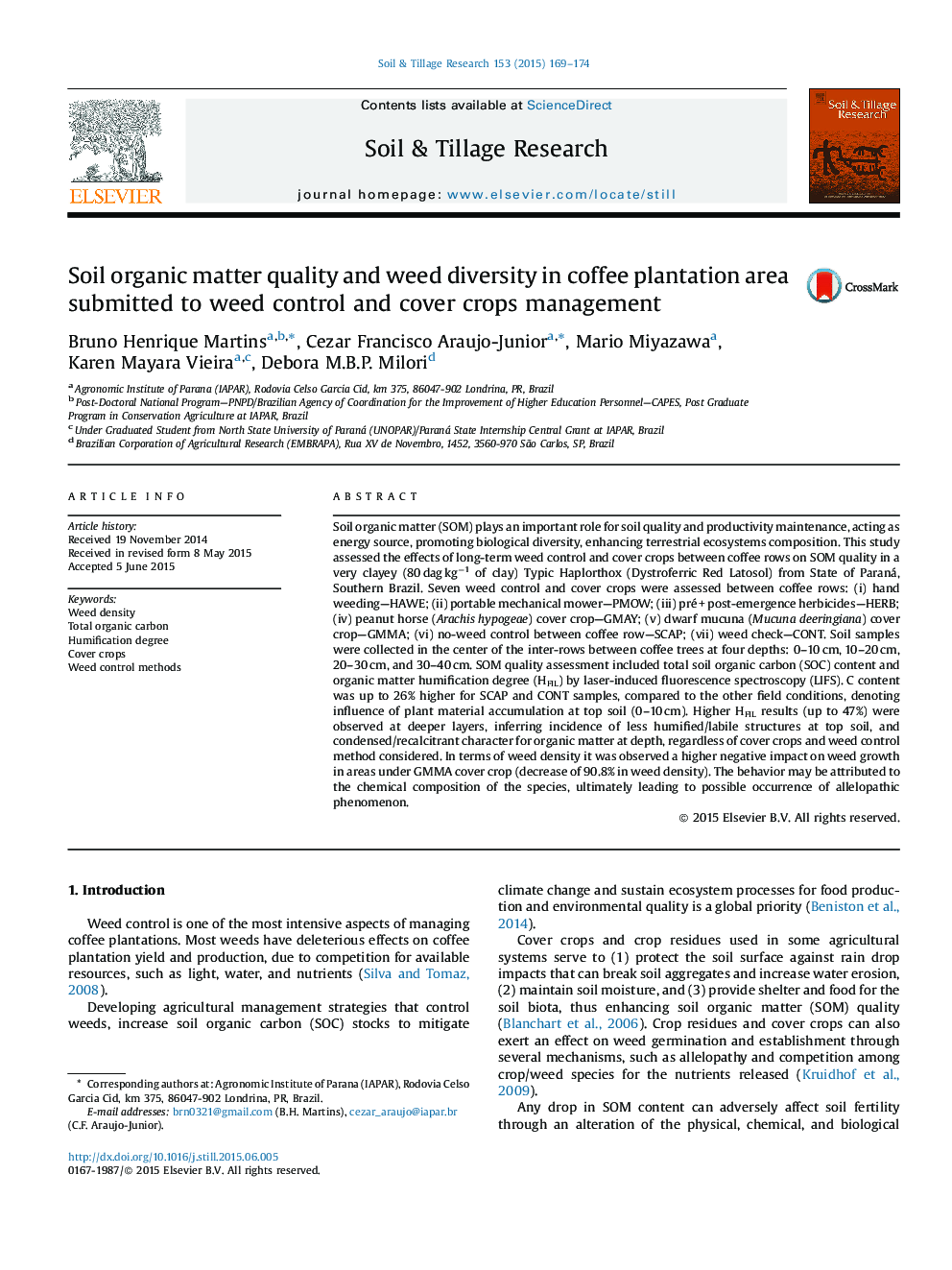| کد مقاله | کد نشریه | سال انتشار | مقاله انگلیسی | نسخه تمام متن |
|---|---|---|---|---|
| 305533 | 513032 | 2015 | 6 صفحه PDF | دانلود رایگان |
• SOM quality was assessed on different cover crop/weed control methods.
• Humification degree was assessed by Laser Induced Fluorescence Spectroscopy (LIFS).
• Lower weed incidence was found at dwarf mucuna cover crop areas.
• Higher C content was observed at superficial layers on cultural weed control area.
• Higher humification degree at depth for all cover crops and weed control methods.
Soil organic matter (SOM) plays an important role for soil quality and productivity maintenance, acting as energy source, promoting biological diversity, enhancing terrestrial ecosystems composition. This study assessed the effects of long-term weed control and cover crops between coffee rows on SOM quality in a very clayey (80 dag kg−1 of clay) Typic Haplorthox (Dystroferric Red Latosol) from State of Paraná, Southern Brazil. Seven weed control and cover crops were assessed between coffee rows: (i) hand weeding—HAWE; (ii) portable mechanical mower—PMOW; (iii) pré + post-emergence herbicides—HERB; (iv) peanut horse (Arachis hypogeae) cover crop—GMAY; (v) dwarf mucuna (Mucuna deeringiana) cover crop—GMMA; (vi) no-weed control between coffee row—SCAP; (vii) weed check—CONT. Soil samples were collected in the center of the inter-rows between coffee trees at four depths: 0–10 cm, 10–20 cm, 20–30 cm, and 30–40 cm. SOM quality assessment included total soil organic carbon (SOC) content and organic matter humification degree (HFIL) by laser-induced fluorescence spectroscopy (LIFS). C content was up to 26% higher for SCAP and CONT samples, compared to the other field conditions, denoting influence of plant material accumulation at top soil (0–10 cm). Higher HFIL results (up to 47%) were observed at deeper layers, inferring incidence of less humified/labile structures at top soil, and condensed/recalcitrant character for organic matter at depth, regardless of cover crops and weed control method considered. In terms of weed density it was observed a higher negative impact on weed growth in areas under GMMA cover crop (decrease of 90.8% in weed density). The behavior may be attributed to the chemical composition of the species, ultimately leading to possible occurrence of allelopathic phenomenon.
Journal: Soil and Tillage Research - Volume 153, November 2015, Pages 169–174
